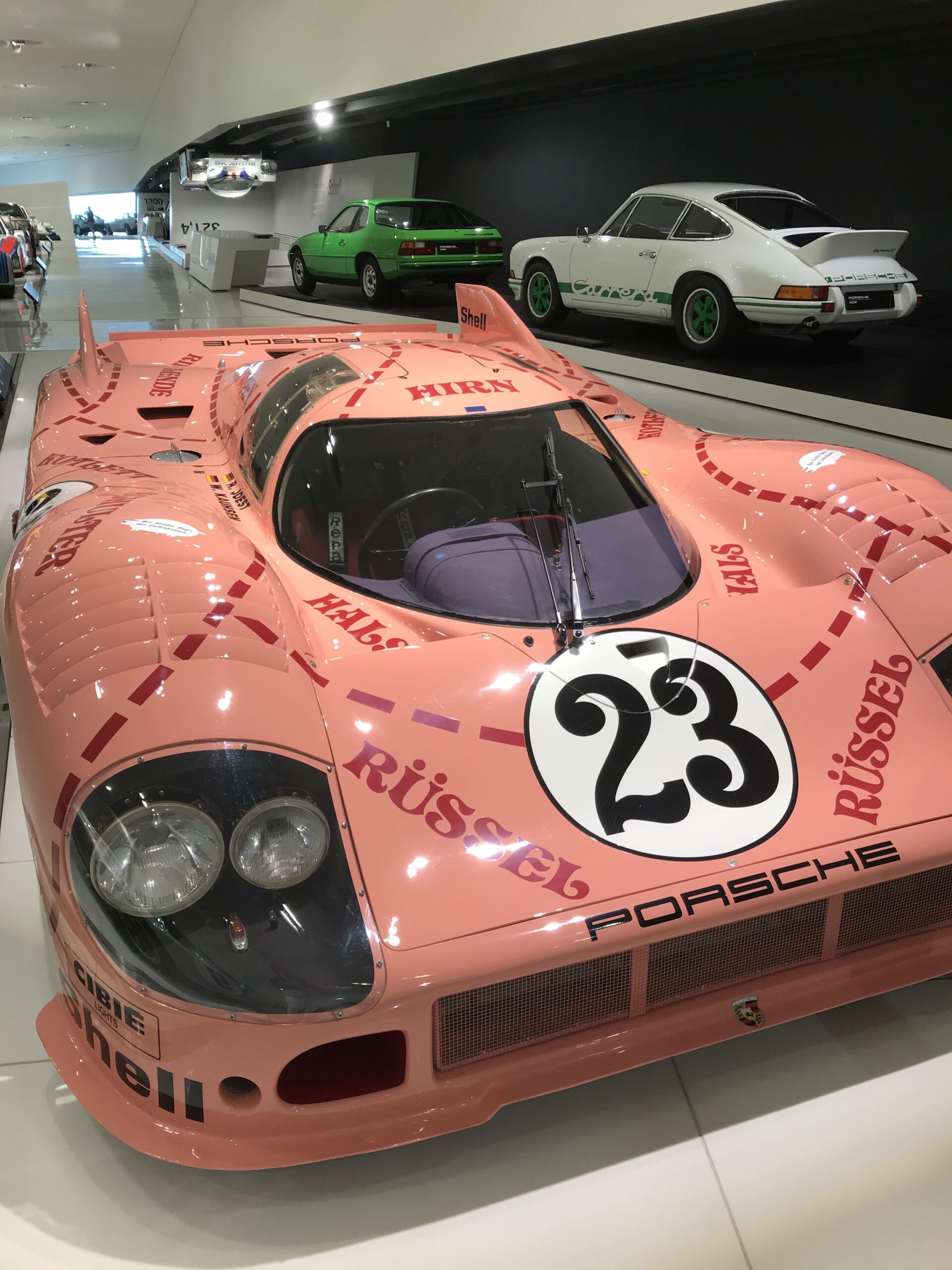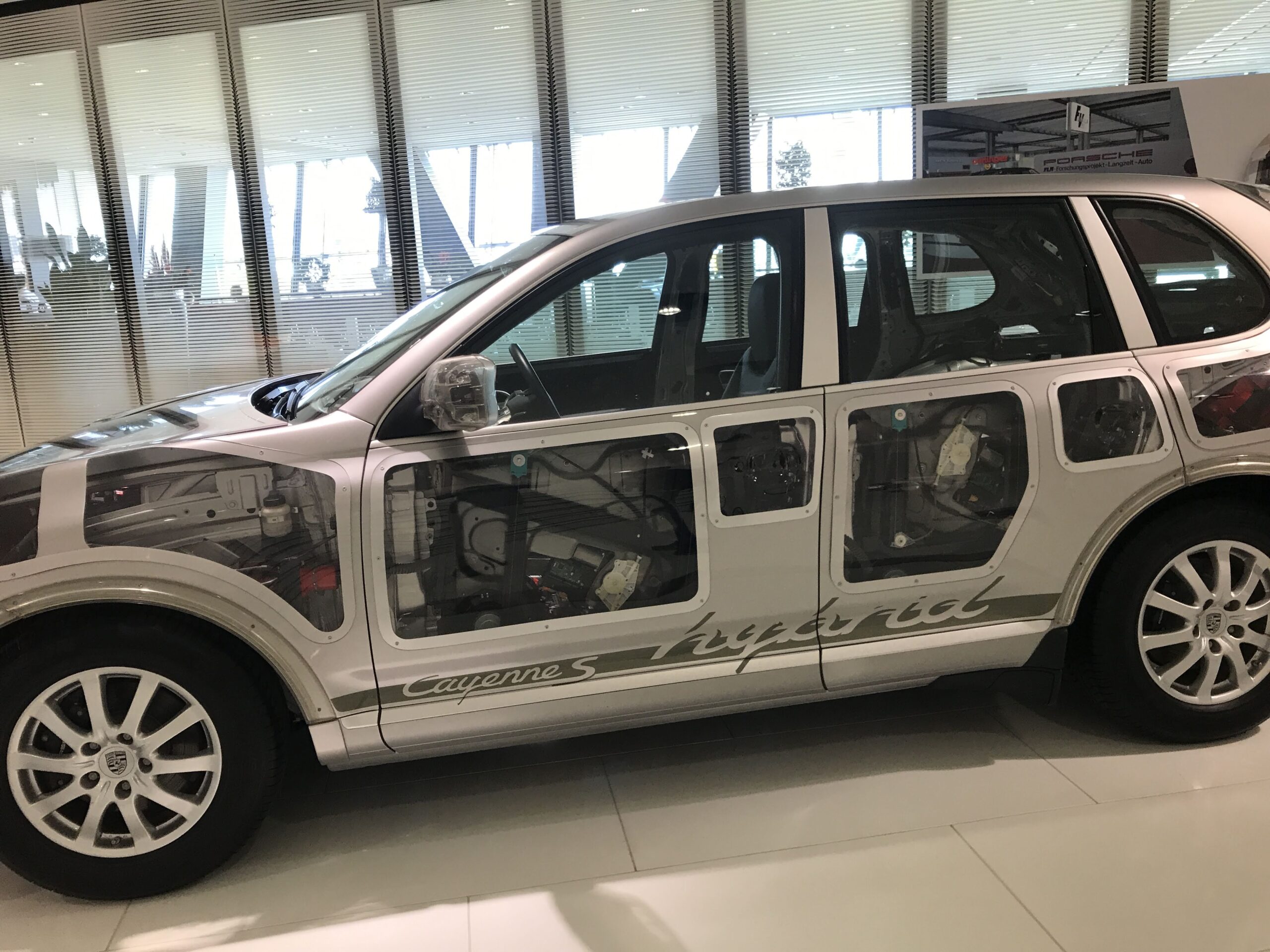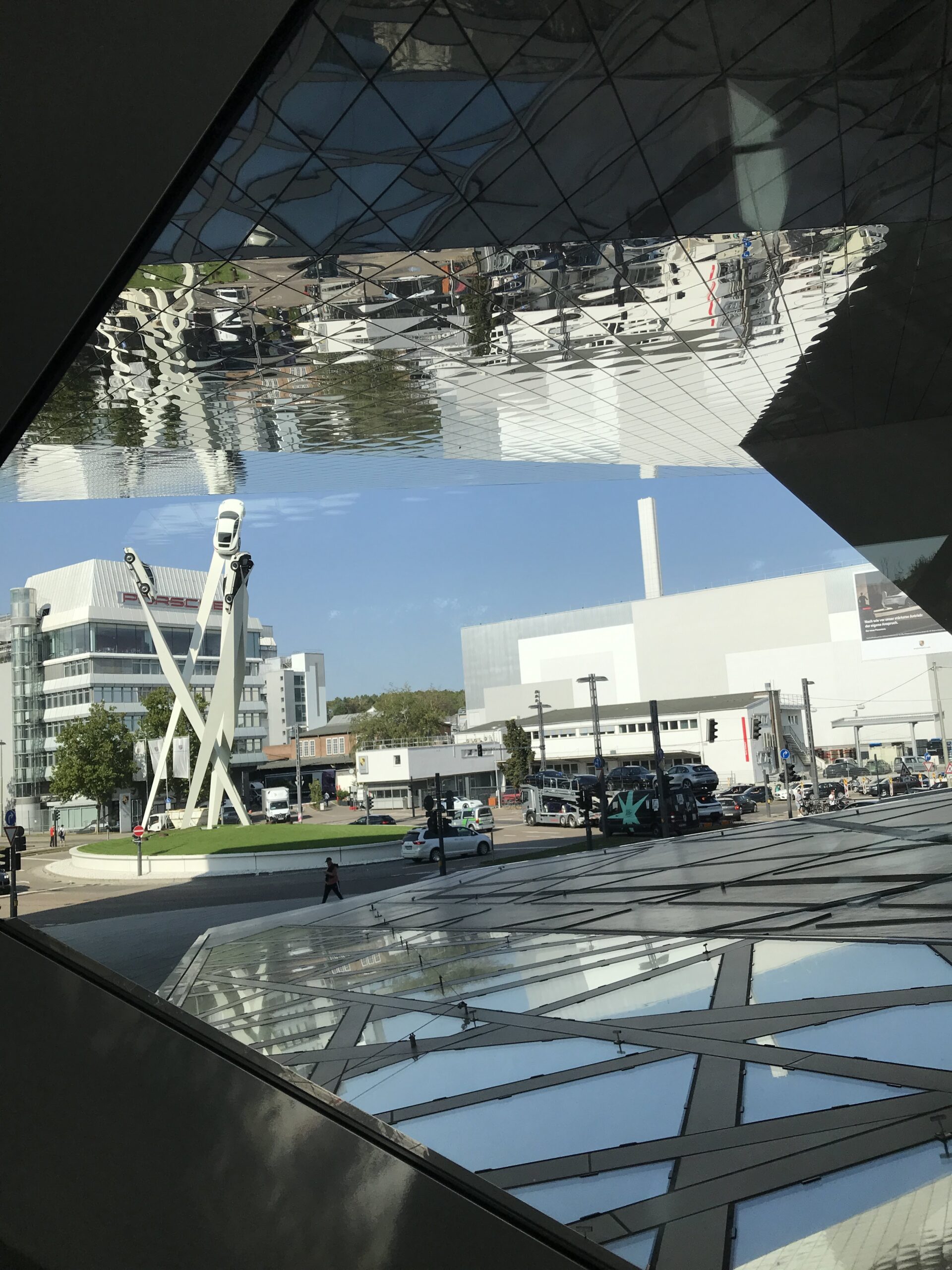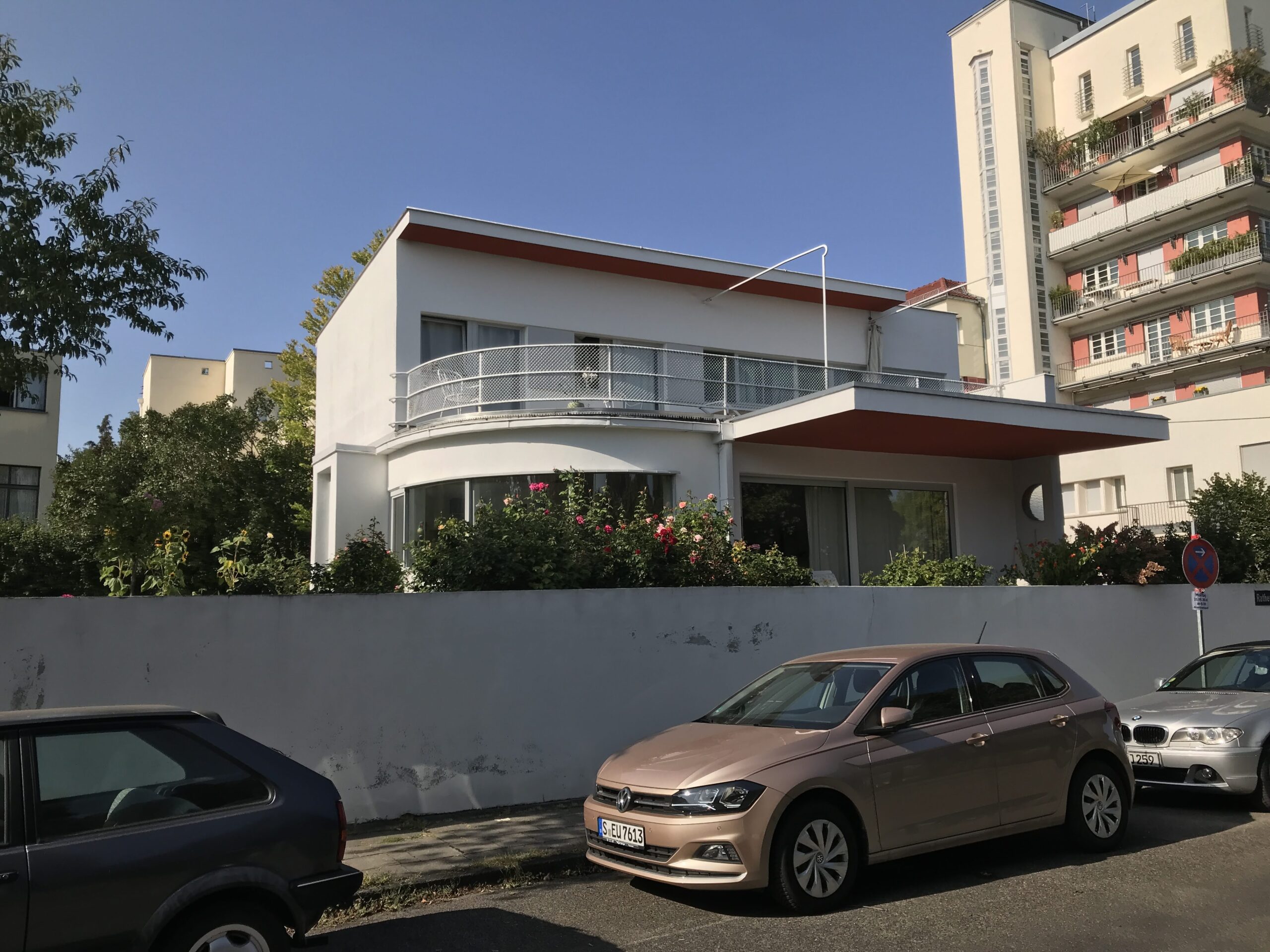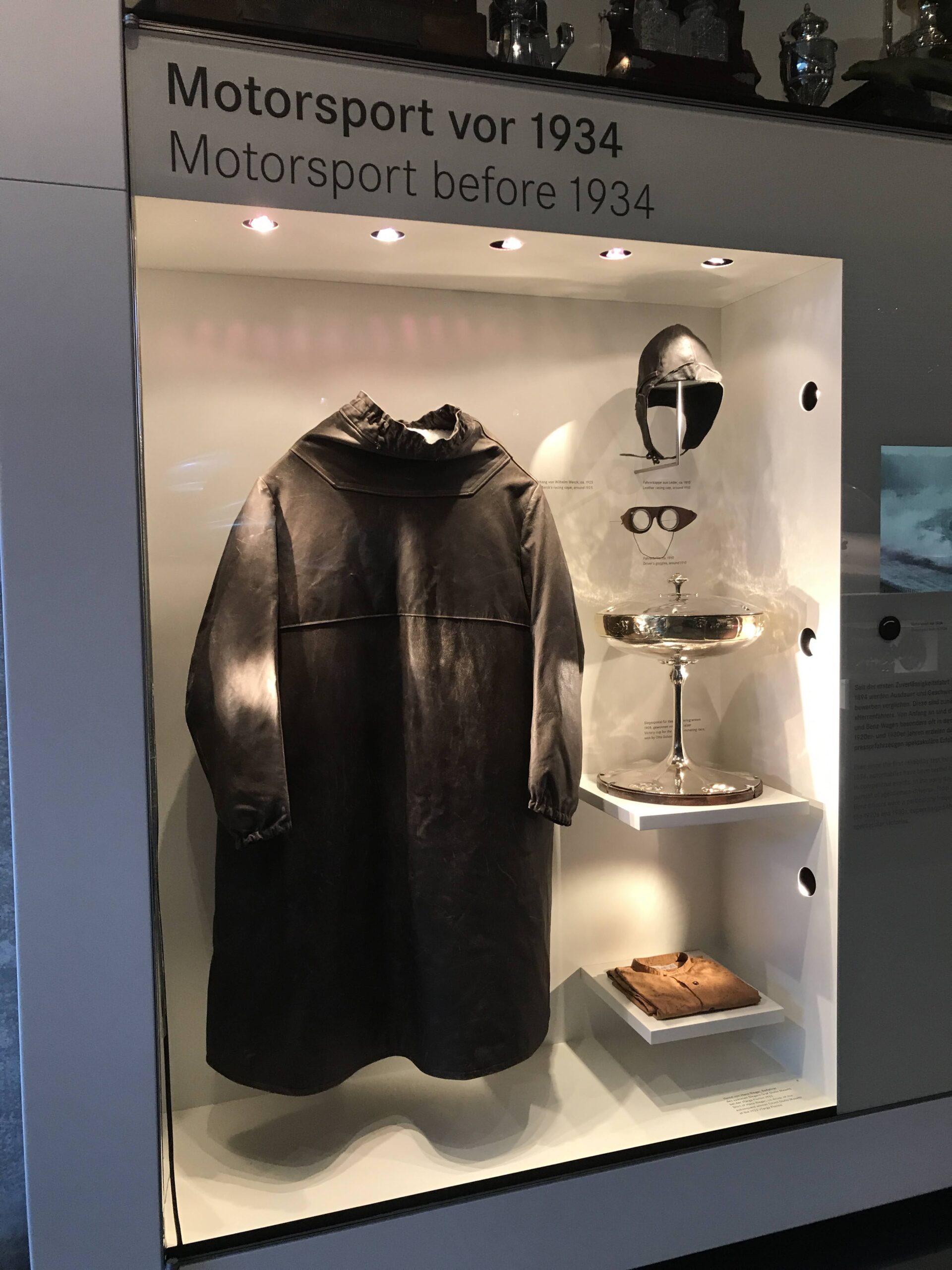Stuttgart is a bigger city and it has a lot to offer. It reminds us of Chicago, but a lot cleaner. It is a big manufacturing hub, and has plants for Porsche, Mercedes Benz, and more. There are an ample number of museums in Stuttgart, including the Porsche Museum, the Mercedes-Benz Museum, and a museum about what they thought futuristic houses would look like after the 1920s. There is even a museum devoted to pigs!
Lucas and I started out the day at the Porsche Museum, where we learned a lot about Ferdinand Porsche, and his son, Ferry. Ferdinand started making cars that were the fastest, lightest, most smart designed, and innovative. He seemed to separate his concentration into either family cars or race cars. I also get the feeling that the developments in the race cars trickled over to the family cars. Not all of them, but some major ones.
During WWII, he used labor from concentration camps to better his industry. He was put on one of the councels of the Nazi party, but was one of the only ones who was not militarily involved, but as a civilian. Eventually he was removed from his position because he was not suited for it, according to the Nazi party. We get the feeling like he didn’t really help them with their prerogative. It seemed as though he saw the free labor and wanted to use it to better his cars.
After the war, Porsche was interviewed to see if he should be charged as a Nazi conspiritor, but it was ultimately decided that he never actually cared for or believed in Nazi ideaology. He simply saw the Nazis as a resource to be used to continue improving the car goals. For this reason he was ultimately pardoned of any involvement in WWII. However, it is understandable that anyone who knows Nazi history would still not think what he did was ethical.
The Porsche company was later given to Ferry to continue the legacy, and during Ferry’s time, he continued to push the company in innovating the Volkswagen design. This was one of the cars Hitler designed for the people- something more affordable for those who could not afford a more expensive full-sized car.
Among the numerous cars on display, there were a few that stood out to us. One car was a replica of “Sally” from the movie “Cars”. This car was actually retroactively modified to match the animated “Sally”, and although it had to be modified quite a bit to match the cartoon, it is still operational. This particular car was funny because it of course had eyes, but in support of wearing masks for the Coronavirus, Sally was also wearing a giant mask!
They also had a Porsche tractor on display, showcasing how Porsche also cares a lot about engineering innovation, wherever that might lead, not just in the world of standard automobiles.
One of Lucas’ favorite cars was a race car that was hanging upside-down from the ceiling. This particular car was made to be extremely aero-dynamic, and according to physics, if it were to reach ~314 Km/hour, it would generate enough downward air force that it could actually drive on a ceiling, defying gravity. That would be something super cool to see!!!
Another car I really liked was a championship racing car that has performed a hattrick on the racing circuit (three successive wins in a row), as well as winning 17 races and 6 world championships in only 4 years. Porsche really seems to know what they are doing.
After this we went to the Weissenhof Estate. This is a neighborhood in Stuttgart, which in the 1920’s was built by some talented architects. The goal, as part of a new movement in Germany to advance on both a practical and modern expressive idea, was to showcase what houses of the future could be like. Ten designers were chosen from 60 or more. They worked together to make 21 different buildings that provided 63 units of family space. Each building showcased a different kind of design.
For instance, one apartment building was made with various sized apartment heights and shapes, to allow for all the balconies to face south, while another building was made for a single family with a very open concept feel. This project attracted widespread attention and over 500,000 people went to see the finished estate.
Interestingly, the Nazi party did not approve of this new thinking, and tried to have the estate destroyed so a military base could be built there instead, but the plans never went through. However, during WWII, eight of the buildings were destroyed by bombs, with two more being damaged beyond repair and subsequently taken down. What remains now are the last 11 buildings, which are all used for living, except one building which became the museum, showcasing what the insides of the homes used to look like. Lucas and I thought it seemed overly functional though, and almost too sterile to feel like an advanced type of home.
After the estate, we went to the Mercedes-Benz museum. It intertwined world history with their own history of Mercedes-Benz vehicle models. The museum had an interesting layout to it, that Lucas and I still do not really understand. It was made in a type of double helix shape, with 1 side of the helix showing off world history combined with the history of Mercedes-Benz, while the other helix would show collections of vehicles based on categories like mass transportation, celebrity vehicles, or other such things.
Unfortunately when we got there, they were closing in 1 hour, so we had to rush. This made it even harder for us to get a feel for how the museum should actually be enjoyed. We probably could have easily spent 2-3 hours there. One of my favorite finds within the museum was a car owned by Nicholas Cage, an old double decker bus from London, and a car formerly owned by Princess Diana. In this case of Princess Diana, she later had to return the car because it was considered too different and adventurous for someone of her stature to be driving a car. I would hate to have my car taken from me!
At the beginning of the museum, we saw something of interest to Lucas. Benzene is a chemical that was famously used for both engine fuel as well as after-shave decades ago, until it was realized that it causes various forms of leukemia in people. Benz realized the importance of this chemical for his engines, and his frequent need and use of it lead to it acquiring the name BENZene. Back then, benzene was not so common to come by, and so buyers would have to go to chemists in order to purchase it.
With all the treasures here, you definitely need time to explore this place. If you arrive in the last 1.5 hours, you can get an entrance half off, in some ways that isn’t such a bad trade-off for having to spend a designated amount of time here (i.e. only until they close).
With Stuttgart explored, we left to return to our Airbnb. It would have been nice to explore the city more, but it is a very large city and we only had so much time. For instance, the two car museums were on opposite sides of the city, which took 20-30 minutes to cross. Make sure you know these things before you visit Stuttgart. You may want to plan a few days here to fully explore!
